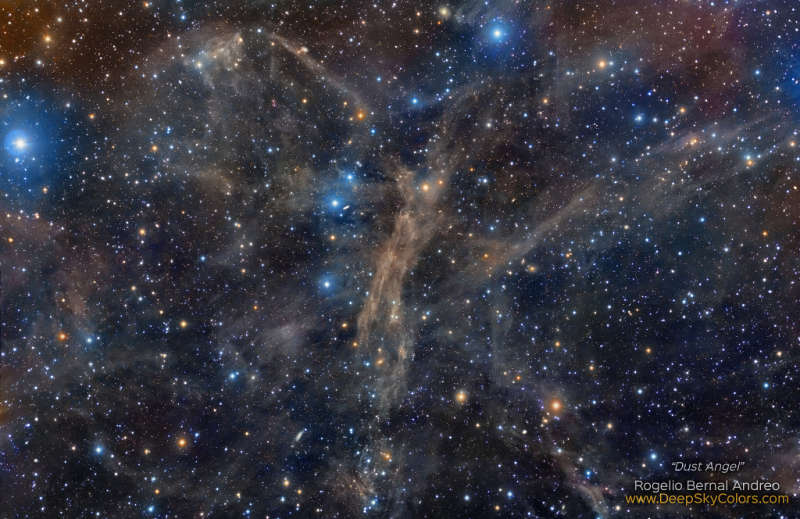
|
Credit & Copyright: Rogelio Bernal
Andreo (Deep Sky Colors)
Explanation:
The combined light of
stars along the Milky Way
are reflected by these cosmic dust clouds that soar
some 300 light-years or so above the plane of our galaxy.
Dubbed the
Angel
Nebula, the faint apparition is part of an expansive complex
of dim and relatively
unexplored,
diffuse molecular clouds.
Commonly found at high galactic latitudes, the dusty galactic cirrus
can be traced over large regions toward the North and South Galactic poles.
Along with the refection of starlight, studies indicate
the dust clouds produce a faint
reddish
luminescence, as interstellar
dust grains convert invisible ultraviolet radiation to visible red light.
Also capturing nearby Milky Way stars and an array of
distant background galaxies, the deep, wide-field 3x5 degree
image spans about 10 Full Moons
across planet Earth's sky
toward the constellation Ursa Major.
|
January February March April May June July August September October November December |
| ||||||||||||||||||||||||||||||||||||||||||||||||
NASA Web Site Statements, Warnings, and Disclaimers
NASA Official: Jay Norris. Specific rights apply.
A service of: LHEA at NASA / GSFC
& Michigan Tech. U.
Based on Astronomy Picture
Of the Day
Publications with keywords: interstellar dust
Publications with words: interstellar dust
See also:
